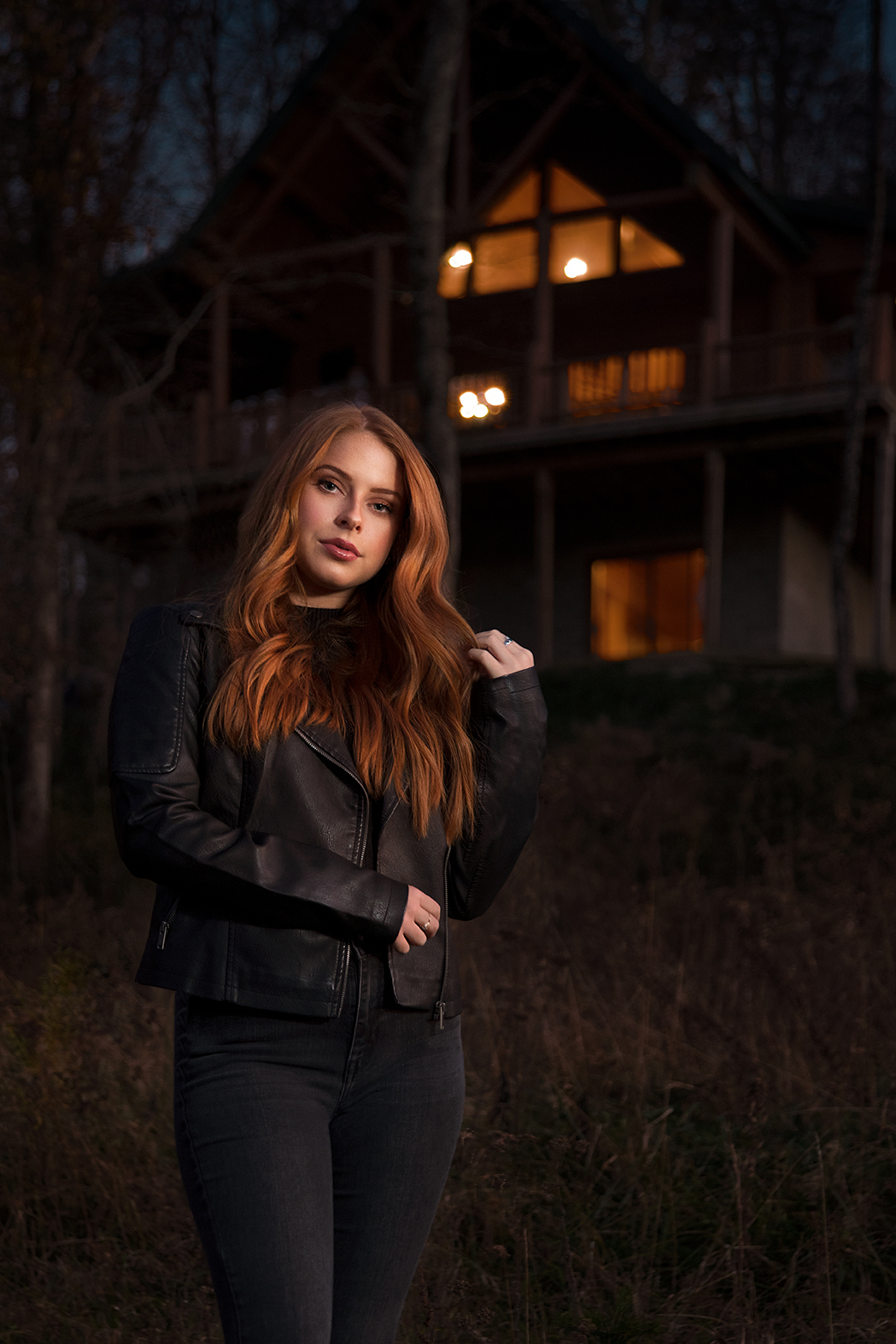Portrait photography at night can be tricky, especially when balancing the ambient light with off-camera flash. Here are a few quick tips to easily accomplish on-location lighting at night.
Tip One: Examine the Place and Time
Shooting night portraits in a city is vastly different than shooting in a remote location since both provide different ambient light. In this video, portrait photographer Ashley Boring is shooting in rural Hocking Hills, Ohio. She is working with minimal ambient light coming from the cabin in the distance.
If Ashley was photographing her night portraits in the city, she would have plenty of ambient lighting coming from surrounding buildings. Working in a remote location compels her to consider the short time frame she has with sunlight.
Ashley knows the cabin will not light the background enough to separate the model. Because of this, Ashley is photographing her model before the sun fully sets below the horizon. This way she still has ambient light coming from the sky.
Tip Two: Understand What Flash to Use
When taking night portraits, it does not take a lot of power to light up your subject. It is important to pick a strobe that is capable of low output. So, for this shoot Ashley chose to use the FJ80 Speedlight as her off camera flash.
If your light has too much power output, you can easily overpower any available ambient light – meaning you won’t have any background detail. More isn’t always better. It’s about choosing the right light and output for the situation.
Tip Three: Utilize Your Camera Settings
Another technique to optimize ambient light at night is to utilize the shutter speed on your camera. Ashley decides to drag the shutter to pick up as much ambient light as possible. It’s important to note that shutter speed does not affect the light from the strobe hitting the subject.
This means you can control how much ambient light you want in your image by either slowing down or speeding up your shutter speed. In this case, Ashley slowed her shutter down so it could pick up more ambient light.
It is important to make sure that your shutter is not too slow. This can create a camera shake effect on your capture. If necessary, you can use a tripod to help you stabilize your camera.
Another setting to consider is your ISO. Don’t be afraid to raise your ISO in order to get enough ambient light. Modern cameras do a great job at higher ISOs as long as you make sure the noise does not become distracting in the photo.
Tip Four: Consider Modifying Your Flash
Choosing to modify your light can also help lower the light output. Adding a modifier also makes it easier to blend ambient light with the light from your flash. The more diffusion you use, the lower the output will be.
If you find that your light is still too powerful, even at the lowest output setting, you can always place your light further away from your subject. The farther away the flash is from your subject, the less amount of light will reach your subject.
You can also modify your light by feathering it. A lot of times when shooting at night, you can get a spotlight look from lighting the ground too much. If you feather your light up, you will avoid the spotlight look and your lighting will look more natural.
Tip Five: Work with Additional Support
Lastly, since it is dark, you might find it difficult to focus your camera on your subject. To help with this, you can use a modeling lamp or flashlight to help focus. If you use a flashlight, make sure to remove it from your subject once you get focus, so you are not working with mixed lighting in your shot.

Lighting Gear in Action

FJ80 Universal Touchscreen 80Ws Speedlight4750

FJ80 Universal Touchscreen 80Ws Speedlight4750


You must be logged in to post a comment.